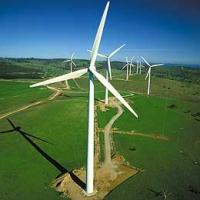Editor’s note: Visit www.nawindpower.com for the most recent daily news affecting North America’s wind industry. NAW’s new Web site features printable and e-mailable daily news links and a searchable archive of wind news.
 Shelton Group, a Knoxville, Tenn.-based communications agency, recently released the results of its Energy Pulse 2006 survey, which investigates energy consumption habits and attitudes of U.S. consumers.
Shelton Group, a Knoxville, Tenn.-based communications agency, recently released the results of its Energy Pulse 2006 survey, which investigates energy consumption habits and attitudes of U.S. consumers.
While consumer responses to the Energy Pulse survey indicated Americans experienced an increase in energy costs of between 10% and 50% last year, results show that consumers remain willing to pay a premium for green power. However, that willingness has not translated into significant program participation rates for the country’s green pricing programs. According to the survey, 44% of Americans say they would participate in a green pricing program, but only 4% are enrolled in one.
According to the U.S. Department of Energy’s (DOE) report “Trends in Utility Green Pricing Programs,” released October 2006, more than 600 utilities – representing 20% of all U.S. utilities – offered a green power option to customers in 2005. Of the more than 130 utility green pricing programs tracked by the DOE’s Green Power Network, approximately 100 offer power generated by wind.
Read
About half of the programs that provide wind power include other renewable resources, such as landfill gas, solar, biomass, biodiesel and hydro. Premiums for wind-only green pricing programs average about 1.8 cents per kWh. The overall national average premium for green pricing programs was 2.36 cents per kWh – down 7.5% since 2000, according to the DOE.
Windlogics
Central Iowa Power Coop. (CIPCo), which supplies power to 12 rural cooperatives and one municipal cooperative in Iowa, has been offering its green pricing program to 260,000 customers through cooperative members since January 2004. Participating customers purchase wind energy in 50 kWh or 100 kWh blocks on a monthly basis for a premium of between 1.5 cents and 2.5 cents per kWh, depending on the supplying cooperative entity.
CIPCo’s program participation rates mirror the results of the Energy Pulse survey. “Our coops have received a lot of interest from their customers, but only a small core of customers have been willing to participate because of the premium price,” says a CIPCo representative.
Explanations provided in the DOE report for the slow improvement in participation include a lack of program awareness and sustained marketing and a discrepancy between survey responses and real behaviors.
Findings from the Energy Pulse survey support this discrepancy.
“When it comes to buying energy-conserving products and services,” says Suzanne Shelton, president and founder of Shelton Group, “there’s still a disconnect between what consumers say and what they do.”
Given high rates of interest in green pricing programs and consumer willingness to pay premiums for renewable energy, Shelton suggests utilities turn up their marketing efforts to improve participation rates.
In July 2006, Cheyenne Light, Fuel & Power (CLF&P) joined the growing list of utilities offering all wind power-based green pricing programs with the launch of its Renewable Premium Program. CLF&P has partnered with the Bonneville Environmental Foundation (BEF) to offer 100 kWh increments to customers for $3.50.
“In the five months since the program started, we have seen fair interest from customers,” explains Rick Kaysen, vice president of CLF&P.
CLF&P promotes its program with media announcements, the company’s Web site, monthly bill inserts, and program brochures and posters at the company’s walk-in facilities. These marketing efforts are in line with marketing techniques employed by utilities tracked in the DOE’s report.
“Advertising programs through utility newsletters, bill inserts, events, news articles [publicity] and Web marketing were among the top marketing strategies used,” the report notes.
Historically, improvements in marketing initiatives have translated directly to increased participation rates.
“Utilities can be misled by their success with customers,” says Pat Nye, director of sales for the BEF. “They lose sight of the fact that they have a captive audience.” In addition to providing RECs services, BEF encourages utilities to market their green pricing programs and has helped some utility partners develop integrated marketing initiatives that build on the combined power of several marketing techniques.
“One utility built a campaign around public service announcements about green energy,” explains Nye. “The campaign included a promotion that sent viewers to a Web site where they could sign up for the green program and receive a free gift for signing up.” The utility saw a 40% increase over previous comparable sign-up periods, adds Nye.